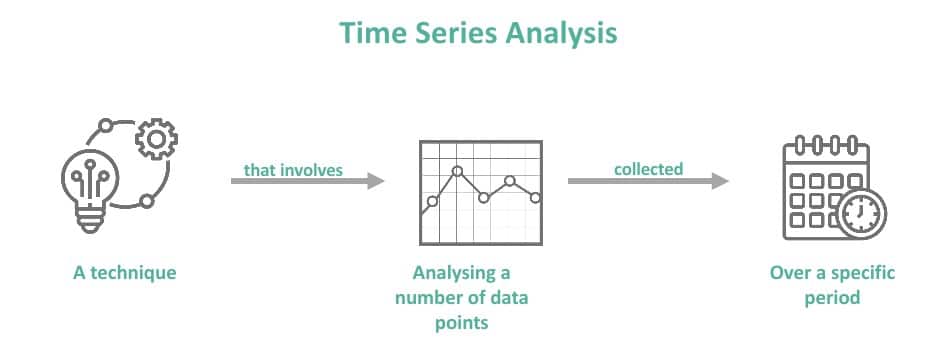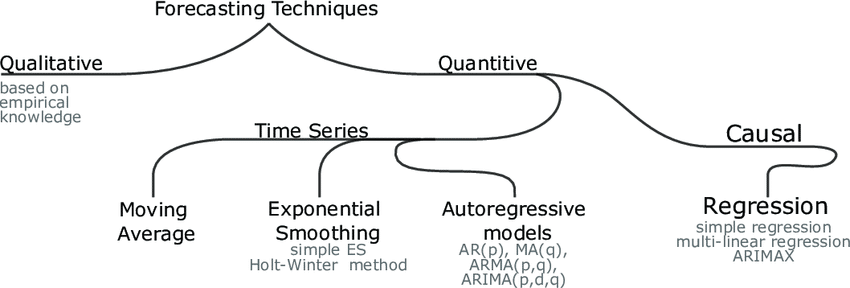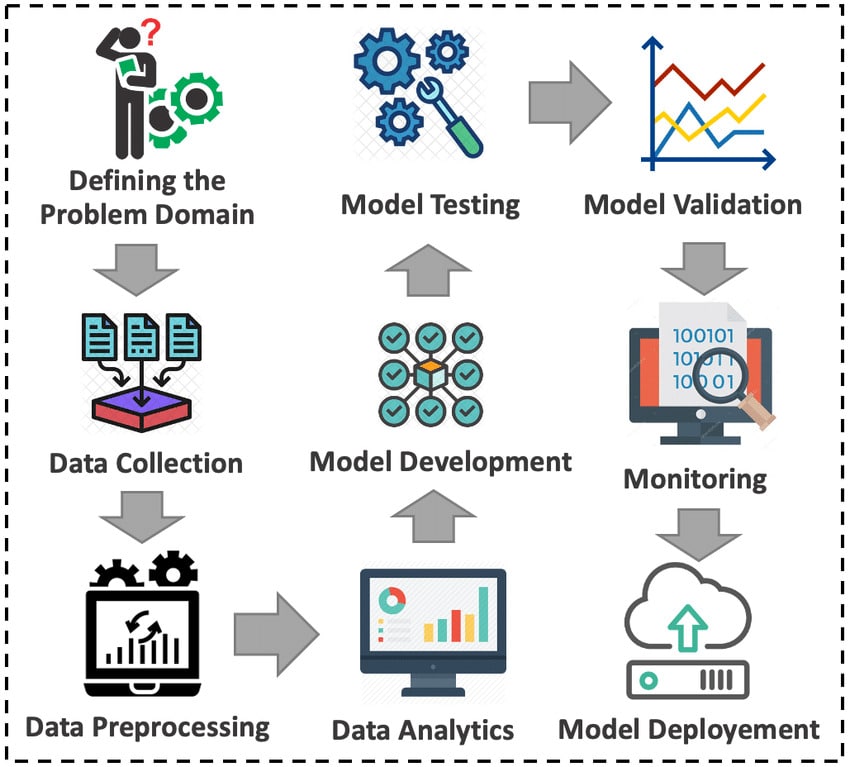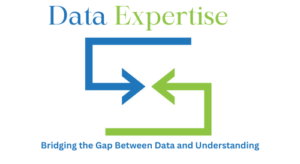Introduction to Time Series Analysis
Time series analysis is a statistical technique that deals with time-ordered data points. Businesses can uncover patterns, trends, and seasonal variations by analyzing data points collected or recorded at specific time intervals, making it an invaluable tool for forecasting and strategic planning.
What is Time Series Analysis?
Time series analysis involves using various statistical methods to analyze time-ordered data. This type of analysis helps understand the underlying patterns of data over time, identifying trends, seasonal effects, and cyclic patterns. Through time series analysis, businesses can predict future values based on previously observed values.
To answer the question, “What is Time Series Analysis?” in more detail, it is a method used to analyze datasets that are sequentially ordered in time. This analysis is particularly useful for making sense of historical data to forecast future trends and behaviors. By examining the patterns within the data, such as seasonality and cycles, time series analysis can provide valuable insights for strategic planning and decision-making. Businesses can use these insights to improve operational efficiency, optimize resource allocation, and enhance overall performance.

Importance of Time Series Analysis in Business
Time series analysis plays a crucial role in business forecasting. It enables companies to anticipate future demand, allocate resources efficiently, and make informed decisions. For instance, retailers can use time series analysis to predict sales during holiday seasons, while manufacturers can forecast inventory needs and production schedules.
Additionally, time series analysis helps businesses identify long-term trends and seasonal variations, which can significantly impact strategic planning. By understanding these patterns, companies can better manage their supply chains, optimize marketing campaigns, and enhance customer satisfaction. This analysis also aids in detecting anomalies and potential issues before they escalate, allowing for proactive problem-solving and risk management.
Key Benefits of Time Series Analysis in Business:
- Demand Forecasting: Predict future demand to ensure adequate inventory levels and avoid stockouts or overstock situations.
- Resource Allocation: Allocate resources more efficiently based on predicted needs and trends.
- Strategic Planning: Develop long-term strategies by identifying trends and seasonal patterns.
- Anomaly Detection: Detect anomalies and potential issues early, enabling proactive problem-solving.
Key Concepts in Time Series Analysis
Understanding key concepts in time series analysis is essential for effective forecasting. Some of these concepts include trends, which refer to the long-term movement in the data; seasonality, which involves regular patterns that repeat over time; cyclic patterns, which are fluctuations occurring at irregular intervals; and noise, which represents random variations in the data.
By grasping these fundamental concepts, businesses can better interpret their data, identify meaningful patterns, and make more accurate predictions. Understanding key concepts in time series analysis is essential for effective forecasting. Some of these concepts include:
- Trend: The long-term movement in the data.
- Seasonality: Regular patterns that repeat over time.
- Cyclic Patterns: Fluctuations that occur at irregular intervals.
- Noise: Random variations in the data.
Time Series Forecasting: Methods and Techniques
Time series forecasting involves predicting future values based on historical data. Common methods and techniques include:

- Moving Averages: Smooth out short-term fluctuations and highlight longer-term trends.
- Exponential Smoothing: Weights past observations with exponentially decreasing weights.
- ARIMA (AutoRegressive Integrated Moving Average): Combines autoregression and moving average models to forecast time series data.
- Seasonal Decomposition: Separates the time series into trend, seasonal, and residual components.
Tools for Time Series Analysis: Python and R
Python and R are popular programming languages for time series analysis due to their powerful libraries and tools.
Time Series Analysis in Python
Python offers various libraries such as Pandas, NumPy, and Statsmodels that facilitate time series analysis. The Prophet library, developed by Facebook, is also widely used for forecasting.
Example:
import pandas as pd
import numpy as np
import statsmodels.api as sm
# Load dataset
data = pd.read_csv('time_series_data.csv')
# Time series decomposition
decomposition = sm.tsa.seasonal_decompose(data['value'], model='additive')
decomposition.plot()
Time Series Analysis in R
R provides robust packages like forecast, tseries, and zoo that are specifically designed for time series analysis.
Example:
library(forecast)
library(tseries)
# Load dataset
data <- ts(read.csv('time_series_data.csv')$value, frequency=12)
# Time series decomposition
decomposition <- decompose(data)
plot(decomposition)Real-World Applications of Time Series Analysis
Time series analysis is used across various industries for forecasting and strategic planning.
Retail
Retailers use time series analysis to predict sales trends, manage inventory, and plan marketing campaigns. By analyzing past sales data, retailers can forecast future demand and optimize their stock levels accordingly.
Finance
Financial analysts use time series analysis to forecast stock prices, interest rates, and economic indicators. It helps in identifying market trends and making investment decisions.
Healthcare
In healthcare, time series analysis is used to monitor patient vitals, predict disease outbreaks, and optimize resource allocation in hospitals.
Checklist for Time Series Analysis
Time series analysis is a statistical method used to analyze data that is ordered by time. This type of analysis helps to uncover patterns in the data over time, such as trends, seasonal effects, and cyclic patterns. By conducting time series analysis, businesses can make predictions about future values based on past observations.
To ensure a comprehensive time series analysis, follow this checklist:
- Collect data at consistent intervals.
- Visualize the data to identify patterns.
- Decompose the time series into trend, seasonal, and residual components.
- Choose the appropriate forecasting model.
- Validate the model using historical data.
- Adjust the model based on performance metrics.
Best Practices for Accurate Time Series Forecasting
For accurate time series forecasting, consider the following best practices:

- Data Preprocessing: Clean and preprocess the data to handle missing values and outliers.
- Model Selection: Choose the right model based on the data characteristics.
- Parameter Tuning: Optimize model parameters for better accuracy.
- Cross-Validation: Use cross-validation techniques to validate the model.
- Regular Updates: Continuously update the model with new data to maintain accuracy.
Challenges in Time Series Analysis
Despite its benefits, time series analysis comes with several challenges. Data quality is a major concern, as inaccurate or incomplete data can lead to poor forecasts and misguided decisions. Additionally, identifying and modeling complex patterns within the data can be difficult, requiring advanced techniques and expertise.
External factors, such as unexpected events or changes in market conditions, can also impact the accuracy of forecasts, making it challenging to maintain reliable predictions. Addressing these challenges is crucial for leveraging the full potential of time series analysis in business forecasting.
Despite its benefits, time series analysis comes with challenges such as:
- Data Quality: Inaccurate or incomplete data can lead to poor forecasts.
- Complex Patterns: Identifying and modeling complex patterns can be difficult.
- External Factors: Unexpected events or changes in external conditions can impact forecasts.
Future Trends in Time Series Analysis
Several emerging trends are shaping the future of time series analysis:
- AI and Machine Learning Integration: Leveraging AI and machine learning for more accurate forecasts.
- Real-Time Analytics: Increasing focus on real-time data processing and analysis.
- Automation: Automating time series analysis processes for efficiency.
- Advanced Visualization: Using advanced visualization techniques to better understand patterns and trends.
Conclusion
Time series analysis is a powerful tool for business forecasting, enabling organizations to make data-driven decisions and plan for the future. By understanding the key concepts, methods, and tools, businesses can harness the power of their data to gain valuable insights and stay ahead of the competition.
FAQs
Q: What is time series analysis?
A: Time series analysis is a statistical technique that analyzes time-ordered data points to identify patterns and make forecasts.
Q: What are common methods for time series forecasting?
A: Common methods include moving averages, exponential smoothing, ARIMA, and seasonal decomposition.
Q: How is time series analysis used in business?
A: It is used for demand forecasting, inventory management, financial analysis, and strategic planning.
Q: What tools are used for time series analysis in Python?
A: Popular tools include Pandas, NumPy, Statsmodels, and Prophet.
Q: What are the challenges in time series analysis?
A: Challenges include data quality, modeling complex patterns, and accounting for external factors.




Reviewed by 1 user
Dataset
How and from where to download the dataset i.e. ‘time_series_data.csv’
You can find the related datasets from different sources like Github, Kaggle, Etc. For example, you can find it below: machinelearningmastery.com/time-series-datasets-for-machine-learning/